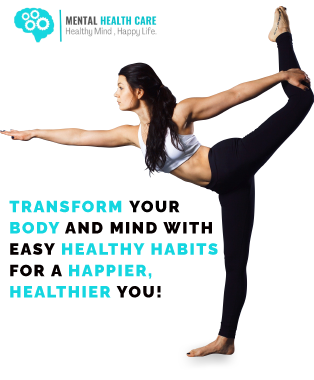Anxiety and panic attacks are common mental health issues that can cause significant distress in our lives. These overwhelming feelings of fear, worry, and stress can be debilitating, affecting our ability to function effectively. Fortunately, there are several mindfulness techniques that can help us cope with these intense emotions. In this blog, we will explore some of the most effective mindfulness techniques to reduce stress and anxiety and promote mental health wellness.
Grounding Techniques
Grounding techniques are helpful in situations where you feel disconnected from your environment or overwhelmed with anxiety or panic. These techniques are designed to bring your focus back to the present moment and help you feel more centered and in control. Here are a few grounding techniques you can try:
5-4-3-2-1: Take a deep breath and identify five things you can see, four things you can touch, three things you can hear, two things you can smell, and one thing you can taste.
Body Scan: Focus on the sensations in your body, starting with your toes and moving up to the top of your head. Notice any areas of tension or discomfort, and breathe into those areas to release the tension.
Mindful Breathing: Close your eyes and focus on your breath. Count each inhale and exhale, or simply observe the sensation of the air moving in and out of your body.
Mindful Movement
Mindful movement, such as yoga, tai chi, or qigong, can help you reduce stress and anxiety by bringing your attention to your body and breath. These practices also help to improve flexibility and balance, which can be helpful for people who experience physical symptoms of anxiety, such as muscle tension or trembling.
In mindful movement practices, the focus is on the present moment, and movements are performed slowly and deliberately. As you move, you can focus on your breath, body sensations, and any thoughts or emotions that arise.
Progressive Muscle Relaxation
Progressive muscle relaxation is a technique that involves tensing and relaxing each muscle group in your body. This technique can help you become more aware of areas of tension in your body and learn to release that tension.
To practice progressive muscle relaxation, start by finding a quiet place to sit or lie down. Close your eyes and focus on your breath. Tense the muscles in your toes and hold for a few seconds before releasing the tension. Move up to your feet, legs, and so on, until you have tensed and released all of the muscles in your body.
Mindful Self-Compassion
Mindful self-compassion is a technique that involves treating yourself with kindness and compassion, especially during times of stress or difficulty. This technique can help to reduce self-criticism and increase feelings of self-worth and acceptance.
To practice mindful self-compassion, start by acknowledging any difficult emotions or experiences you are currently facing. Take a moment to offer yourself kind and supportive words, such as “I am doing the best I can” or “I am worthy of love and compassion.” You can also try placing a hand over your heart or giving yourself a gentle hug to reinforce feelings of warmth and comfort.
Conclusion : Mindfulness techniques can be powerful tools for coping with anxiety and panic attacks. By practicing grounding techniques, mindful movement, progressive muscle relaxation, and mindful self-compassion, you can reduce stress and anxiety and promote mental health wellness. Remember that mindfulness is a skill that takes time and practice to develop, so be patient and persistent in your efforts. With regular practice, you can learn to manage your anxiety and panic attacks in a more mindful and effective way.
Life Skills for Teenage Girls: How to Be Healthy, Avoid Drama, Manage Money, Be Confident, Fix Your Car, Unclog Your Sink, and Other Important Skills Teen Girls Should Know!
Daily Positivity Talking Button – Says 50 Positive Quotes and Affirmations – Stick On Fridge or Desk – Funny Inspirational Gifts for Men and Women – Novelty Motivational Happy Office Gadgets Toy
| Brand | The Monocle Breakers |
| Material | Plastic |
| Educational Objective | Color Recognition |
| Item Weight | 3 Ounces |
| Item Dimensions LxWxH | 7.6 x 4.5 x 1 inches |




